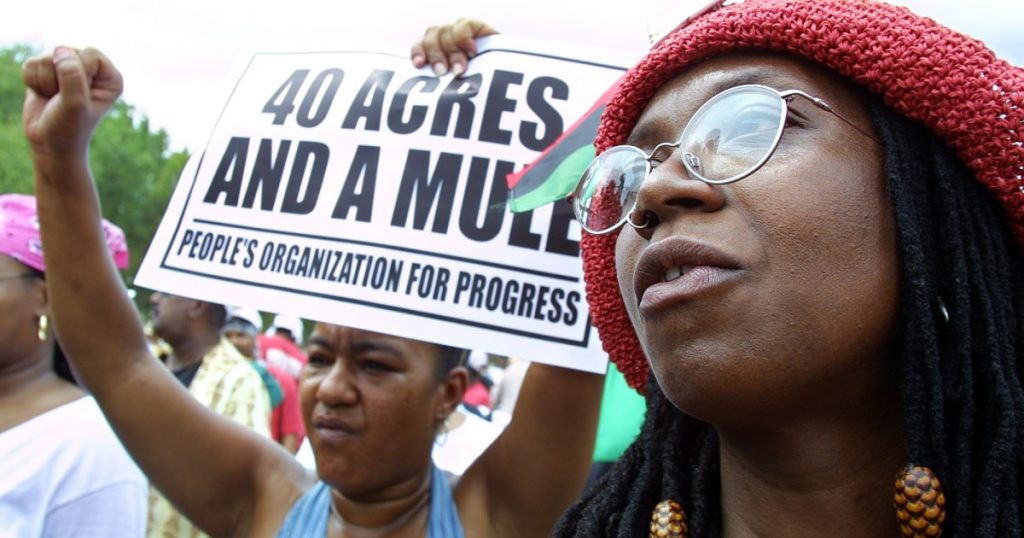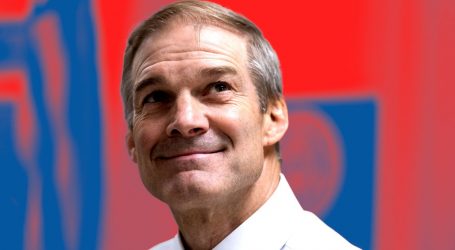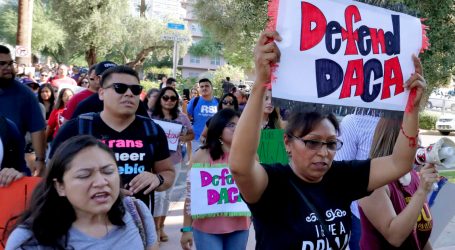The Government Broke Its Promise to Freed People. There’s a Price to Pay.
Andrea Levy (right) from Queens, New York, at a 2002 rally in DC for slavery reparations.Manny Ceneta/Getty Images
Fight disinformation: Sign up for the free Mother Jones Daily newsletter and follow the news that matters.
Fourteen trillion dollars.
That’s the total amount of money that the federal government owes to Black people in America for the legacy of slavery, according to economist William Darity and his colleagues.
It’s not an abstract figure. As Darity explains in the final episode of our “40 Acres and a Lie” series—a groundbreaking collaboration between the Center for Public Integrity, Reveal, and Mother Jones—that number is based on a series of calculations, beginning with the broken promise that newly freed people would receive 40 acres of land. This famous pledge went largely unfulfilled. But in many cases, the betrayal was event deeper. Our two-year investigation, based on Reconstruction-era documents, identified 1,250 formerly enslaved Black Americans given land by the government, only to have it taken away soon after.
“I think that there’s no doubt that there’s a legitimate view of the 40 acres commitment as a form of reparations,” says Darity. It was a promise from the federal government—an entity directly responsible for the horrors of slavery—to help build what would have essentially been “a coastal Black Belt community” after the Civil War.
As Reveal host Al Letson puts it, Darity “believes if that program had never been rescinded, around four million freed people could have settled that huge chunk of land set aside for them, which stretched from South Carolina to Georgia to Upper Florida.”
It was a real, tangible commitment, and the government’s failure to live up to it has had real monetary consequences. According to Darity, the $14 trillion dollars the feds owe to Black Americans is “identical” to the present-day difference in wealth between Black and white households.
“That,” says Darity, “is the beginning of the racial wealth gap in the United States.”





